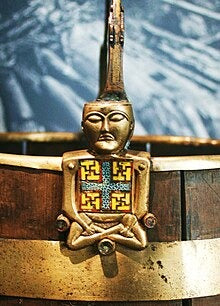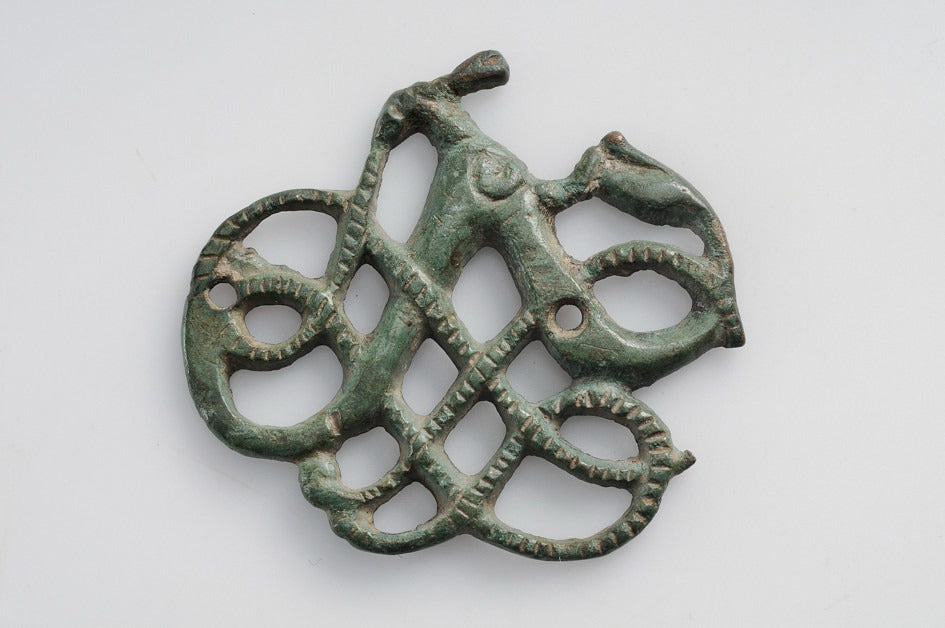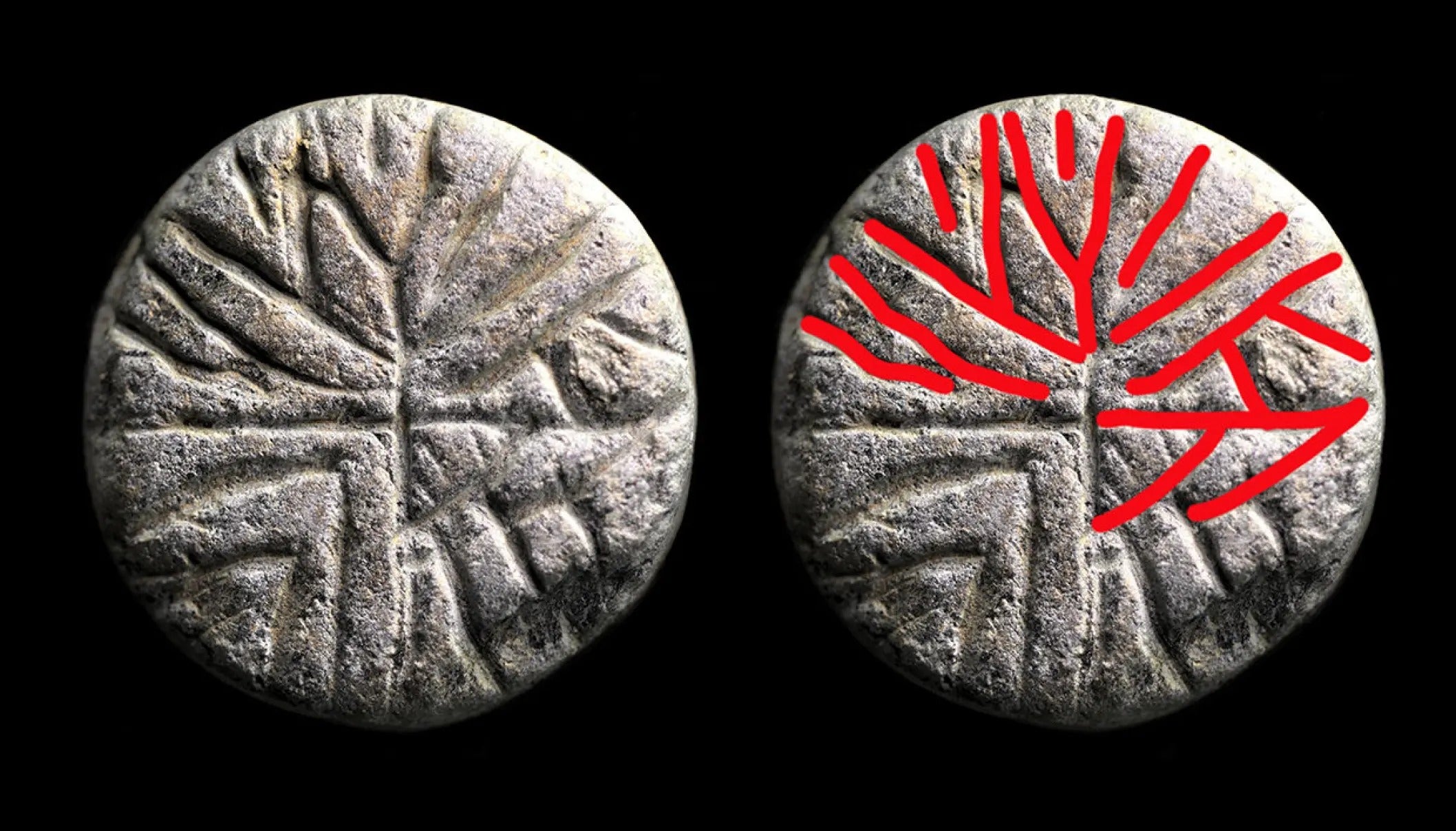
The Discovery of a Medieval Gaming Piece with Runic Inscription in Norway
In 2023, a routine sewer repair in Trondheim, Norway, led to a remarkable archaeological discovery—a gaming piece dating back to the medieval era, inscribed with runes. This finding, rare in both its context and craftsmanship, sheds light on the cultural and social dimensions of medieval Scandinavia, particularly regarding leisure activities and symbolic expressions of identity. This investigation delves into the details of the find, its implications for our understanding of Norse and medieval life, and the broader cultural significance of such artifacts.
The Discovery: A Last-Minute Dig
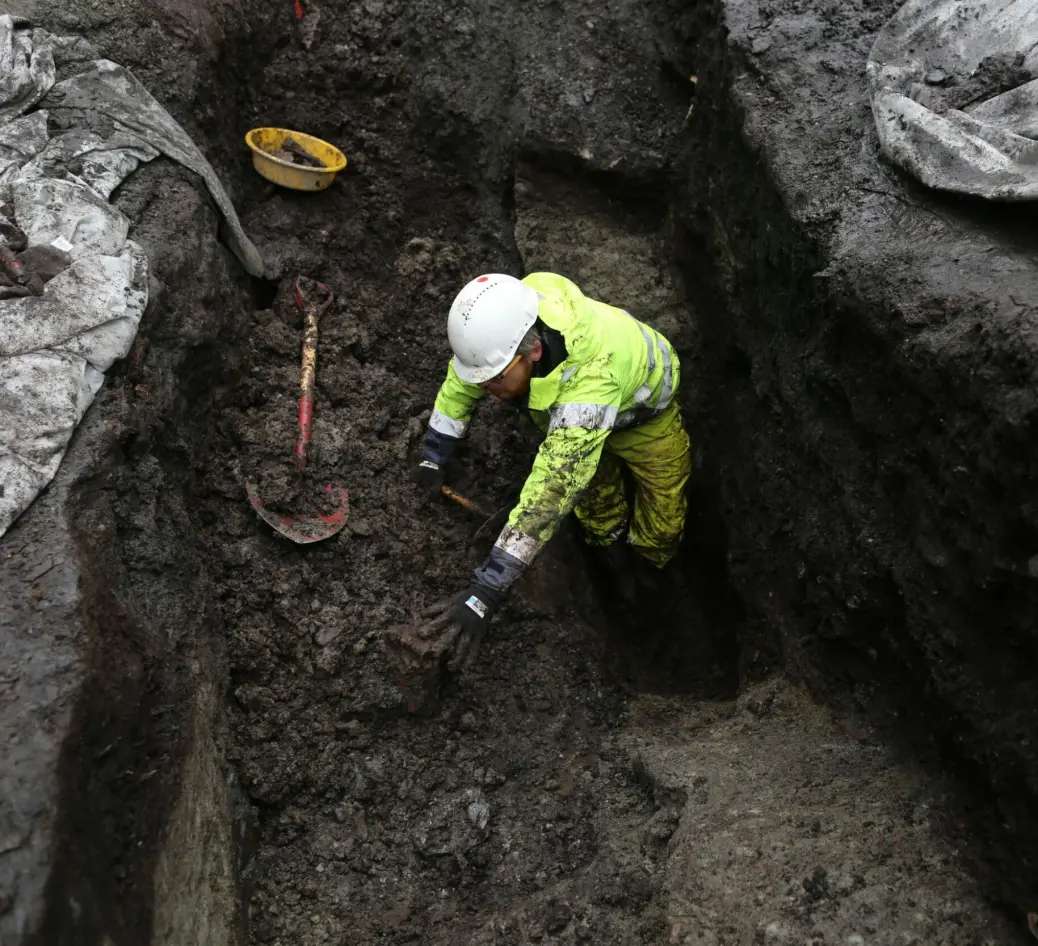
Archaeologist Dag-Øyvind Engtrø Solem excavating the pit where a gaming piece was discovered, approximately 4 meters below the current surface level. (Photo: Audun B. Selfjord, NIKU)
The excavation, conducted by archaeologists from the Norwegian Institute for Cultural Heritage Research (NIKU), was limited in scope but revealed deep layers of Trondheim's medieval past. The site, only four meters long, reached 3.8 meters below the surface, where archaeologists uncovered birch bark dating from 1000-1150 AD and a layer of coal from around 1030-1180 AD. It was between these layers that the gaming piece, made of soapstone, was found.
This small artifact immediately piqued the interest of archaeologists due to its rarity and the fact that only two other items with runic inscriptions had been previously found in Trondheim.
Dag-Øyvind Solem, the archaeologist responsible for the find, expressed his excitement: “Ever since I studied runology, I’ve wanted to find a runic inscription, so this was a dream find.”
Runic Inscriptions: Hidden Messages
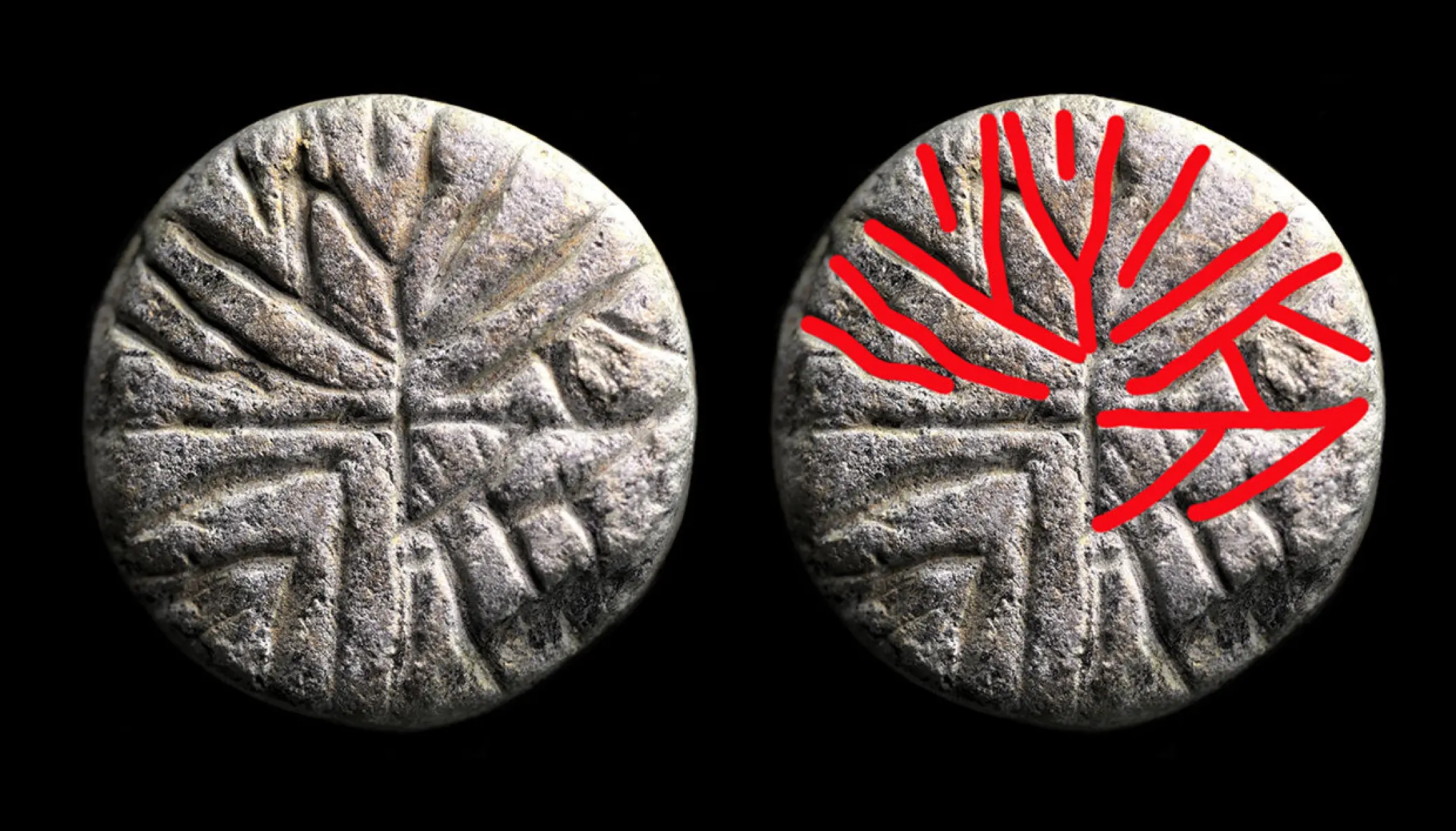
Though the lines may appear random, runologist Karen Langsholt Holmqvist confidently identifies them as runes, reading "siggsifr." (Photo: Dag-Øyvind Engtrø Solem, NIKU)
Runologist Karen Langsholt Holmqvist from NLA University College in Oslo was called upon to examine the artifact. Her findings confirmed that the gaming piece was indeed inscribed with runes, although at first glance, the markings appeared to be random geometric shapes. However, closer examination under a microscope revealed that the inscription had been meticulously planned. Scratch marks indicated that the creator had drawn guiding lines before carving the runes, a process that required precision to match the curvature of the piece.
The inscription reads siggsifr, a name that combines the elements Sig- (a common prefix in Norse names, meaning “battle”) and -sifr, a poetic word meaning “brother.” Holmqvist speculates that this might translate to “battlebrother,” a name that could belong to the person who made or owned the piece.
The Symbolic Weight of Siggsifr
This seemingly simple name carries layers of meaning. In Norse culture, battle and kinship were integral parts of identity. The inscription could represent a “brother in arms” or even denote the strategic nature of the game itself, much like chess, where the pieces symbolized warriors or kings on the battlefield.
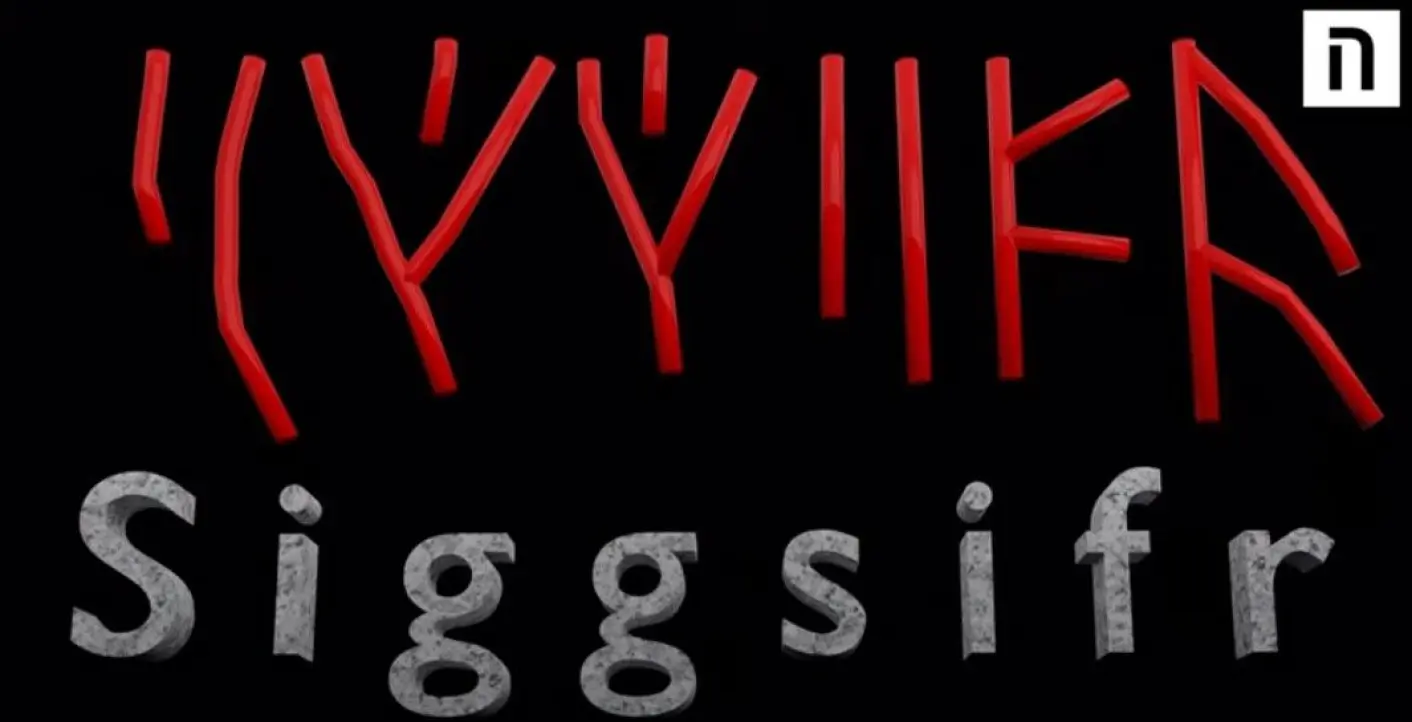
Still from a video created by Dag-Øyvind Engtrø Solem, NIKU.
Archaeologist Solem further suggests that the gaming piece could have been a King in a chess-like game, symbolizing a strategic leader or “brother in battle.” This interpretation aligns with the known traditions of naming weapons and items as extensions of one’s personal or familial identity in Norse culture.
Medieval Gaming: Entertainment and Controversy
The discovery of gaming pieces with runic inscriptions, although rare, is not entirely unprecedented. Throughout Viking and medieval Scandinavian history, gaming was a popular pastime. Games like hnefatafl were widely played across Norse settlements and served both recreational and social functions. Vikings were known to bring gaming boards on their travels, and some were even buried with them, a testament to the significance of such games in their lives.
However, medieval Norwegian society was not without its tensions regarding gambling. In fact, laws like those in Magnus Lagabøte’s city statutes from 1276 banned gambling with money, indicating that gambling had become a problematic issue in some communities.
This discovery not only provides insight into the everyday lives of medieval Norwegians but also offers clues to the potential ceremonial or symbolic role gaming might have played in reinforcing social bonds or status.
Cultural Implications: A Brother in Battle or a Chess King?
The runic inscription and the context of the gaming piece raise important questions about how medieval Norwegians viewed games. Were they purely recreational, or did they carry deeper social or symbolic meanings? The concept of a “battlebrother” inscribed on a gaming piece suggests that games might have been seen as more than entertainment—they could reflect the warrior ethos of the time, even in a social setting.
Holmqvist’s interpretation, which connects the name siggsifr to both familial and battle metaphors, highlights the complex interplay of identity and entertainment in medieval Norse culture. Moreover, Solem’s hypothesis that the piece could represent a chess king further suggests a strategic dimension to games, where players enacted battles of wits as well as symbolic contests of power and leadership.
A Broader Cultural Context: Runes, Identity, and Memory
Runic inscriptions on small objects were not uncommon in medieval Scandinavia, yet each discovery opens new windows into how people used written language as a tool for identity and memory. The Trondheim gaming piece provides an intimate glimpse into the life of its owner, hinting at personal relationships, possibly a reflection of warrior bonds or familial ties.
Such finds underscore the importance of preserving runic artifacts, which serve as cultural markers of a time when literacy was not widespread but still played a key role in rituals, games, and expressions of identity.
Conclusion: A Window into Medieval Life
The discovery of this gaming piece with runic inscriptions offers an extraordinary look at the interplay of leisure, identity, and craftsmanship in medieval Norway. The careful planning of the runes, the potential meaning behind the name siggsifr, and the artifact’s physical context all contribute to our understanding of Norse society, where games were more than just entertainment—they were a reflection of social structure, personal identity, and even the bonds of battle.
This find not only enriches our understanding of runic writing and its practical uses but also highlights the broader cultural implications of games in the Viking and medieval eras. As archaeologists continue to uncover artifacts like this, we gain further insight into the complexities of Norse life, both in play and in war.
References
Bergstrøm, I. I. (2023). Medieval gaming piece with runic inscription discovered in Norway. Science Norway. Retrieved from https://www.sciencenorway.no
Holmqvist, K. L. (2023). Personal examination of the gaming piece. NLA University College, Oslo.
Solem, D. (2023). Archaeological press release. Norwegian Institute for Cultural Heritage Research (NIKU).
